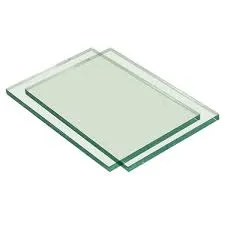The Allure of Decorative Glass A Timeless Art Form
Decorative glass has captivated human imagination for centuries, marrying functionality with artistry. From ancient civilizations to contemporary design, glass has been used not merely as a material but as a canvas for creativity. The versatility of glass allows it to be transformed into an array of decorative elements that enhance the aesthetic appeal of any space, making it an enduring choice among architects, designers, and artists alike.
Historical Significance
The history of decorative glass dates back to ancient Egypt, where artisans developed techniques for creating stained glass and mosaic tiles. The Romans further advanced glass-making technology, producing glass vessels that were both beautiful and functional. By the Middle Ages, stained glass windows adorned cathedrals across Europe, telling biblical stories while bathing interiors in colorful light. This use of glass to convey narrative and evoke emotion has persisted through the ages, reflecting broader cultural themes and artistic movements.
Techniques and Styles
The realm of decorative glass encompasses a wide variety of techniques, each offering unique aesthetic qualities. Among these, stained glass stands out for its vibrant colors and intricate designs. Artisans employ a method of piecing together colored glass fragments held in place by lead came, resulting in stunning works that not only illuminate but also narrate stories.
Mosaic glass, another ancient technique, involves assembling small pieces of colored glass into patterns or images, often used in flooring and wall decorations. In contrast, blown glass is marked by its fluidity and organic forms, often seen in sculptural pieces and functional items like vases and bowls. Each technique contributes to a rich tapestry of styles, from the ornate Baroque designs of the 17th century to the sleek minimalism of contemporary glass art.
Contemporary Innovations
decorative glass
In the realm of modern design, decorative glass has evolved with innovative techniques and materials, pushing the boundaries of traditional glass art. Artists and designers experiment with colors, textures, and forms, incorporating new technologies such as kiln casting, glass fusion, and 3D printing. These advancements allow for the creation of intricate patterns and unique sculptural pieces that challenge conventional aesthetics.
Architects increasingly embrace decorative glass in their designs, using it to create stunning façades, interior partitions, and even furniture. The use of glass as a design element fosters a sense of openness and light, blurring the boundaries between indoor and outdoor spaces. This transparency is not merely aesthetic; it also promotes sustainability by maximizing natural light, reducing the need for artificial lighting, and ultimately minimizing energy consumption.
Cultural Reflection
Decorative glass reflects cultural and social values. In various cultures, glass objects are not just decor; they hold symbolic meanings. For instance, in many Middle Eastern countries, stained glass lanterns symbolize spirituality and serve as a bridge between the earthly and the divine. Similarly, the use of colored glass in traditional Japanese art underscores the harmony between nature and craftsmanship.
As an artistic medium, decorative glass can provoke thought and inspire conversation, particularly when addressing contemporary issues such as sustainability, identity, and social justice. Artists are increasingly using glass to create works that comment on these themes, engaging viewers on multiple levels.
Conclusion
The world of decorative glass is vast and varied, encompassing a rich history and myriad styles. From ancient stained glass windows to modern glass sculptures, this art form continues to evolve while retaining its timeless allure. As we look toward the future, the potential for decorative glass remains limitless, inspiring new generations of artists and designers to explore its possibilities. Whether you encounter a stunning glass installation in a museum, a beautifully crafted vase in a home, or a striking glass façade on a modern building, decorative glass undoubtedly enriches our lives, adding beauty and resonance to the spaces we inhabit. Its ability to merge artistry with function ensures that it will remain a cherished medium in the world of design for years to come.
 Afrikaans
Afrikaans  Albanian
Albanian  Amharic
Amharic  Arabic
Arabic  Armenian
Armenian  Azerbaijani
Azerbaijani  Basque
Basque  Belarusian
Belarusian  Bengali
Bengali  Bosnian
Bosnian  Bulgarian
Bulgarian  Catalan
Catalan  Cebuano
Cebuano  Corsican
Corsican  Croatian
Croatian  Czech
Czech  Danish
Danish  Dutch
Dutch  English
English  Esperanto
Esperanto  Estonian
Estonian  Finnish
Finnish  French
French  Frisian
Frisian  Galician
Galician  Georgian
Georgian  German
German  Greek
Greek  Gujarati
Gujarati  Haitian Creole
Haitian Creole  hausa
hausa  hawaiian
hawaiian  Hebrew
Hebrew  Hindi
Hindi  Miao
Miao  Hungarian
Hungarian  Icelandic
Icelandic  igbo
igbo  Indonesian
Indonesian  irish
irish  Italian
Italian  Japanese
Japanese  Javanese
Javanese  Kannada
Kannada  kazakh
kazakh  Khmer
Khmer  Rwandese
Rwandese  Korean
Korean  Kurdish
Kurdish  Kyrgyz
Kyrgyz  Lao
Lao  Latin
Latin  Latvian
Latvian  Lithuanian
Lithuanian  Luxembourgish
Luxembourgish  Macedonian
Macedonian  Malgashi
Malgashi  Malay
Malay  Malayalam
Malayalam  Maltese
Maltese  Maori
Maori  Marathi
Marathi  Mongolian
Mongolian  Myanmar
Myanmar  Nepali
Nepali  Norwegian
Norwegian  Norwegian
Norwegian  Occitan
Occitan  Pashto
Pashto  Persian
Persian  Polish
Polish  Portuguese
Portuguese  Punjabi
Punjabi  Romanian
Romanian  Russian
Russian  Samoan
Samoan  Scottish Gaelic
Scottish Gaelic  Serbian
Serbian  Sesotho
Sesotho  Shona
Shona  Sindhi
Sindhi  Sinhala
Sinhala  Slovak
Slovak  Slovenian
Slovenian  Somali
Somali  Spanish
Spanish  Sundanese
Sundanese  Swahili
Swahili  Swedish
Swedish  Tagalog
Tagalog  Tajik
Tajik  Tamil
Tamil  Tatar
Tatar  Telugu
Telugu  Thai
Thai  Turkish
Turkish  Turkmen
Turkmen  Ukrainian
Ukrainian  Urdu
Urdu  Uighur
Uighur  Uzbek
Uzbek  Vietnamese
Vietnamese  Welsh
Welsh  Bantu
Bantu  Yiddish
Yiddish  Yoruba
Yoruba  Zulu
Zulu 

